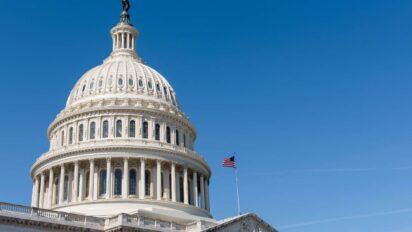We’ve got refrigerators ordering our groceries and cars that can drive us to our destination while we take a quick snooze. Social media platforms have turned into living, breathing, news-reporting machines and you’ll rarely find any young adults without their voice-assisted smartphone in their hands. It’s clear the U.S. is THE most advanced country in the world, right? Not exactly.
A 2020 study by Datareportal found the grand ol’ U.S. of A. doesn’t even make the top 10 when it comes to basic internet connectivity. We don’t even make the top 20! The U.S. comes in at #27 of 30 countries studied with 87% of the population connected.
Why should I care?
At first glance, 87% seems pretty impressive. But consider this — that amounts to 42.6 million people without access to internet service, a vital resource in today’s remote working and learning environments. Due to COVID-19, the government is also promoting an online response to the annual census for the first time. The census helps the government with resource allocation across the country. If more than 42 million Americans are unable to respond, that’s a big gap in information.
So, which countries are beating us?
Iceland, Kuwait, Qatar, UAE and Bahrain took the top five spots with 99% connectivity amongst their total populations. One might assume these countries rank better because they have smaller populations — Iceland has a population of 336,742 — but others in the list with comparable numbers of residents, like Japan and Germany, have achieved over 90% connectivity (92% and 93% respectively).
North America is better connected than most continents
When it comes to North America as a whole, 76% of residents have access to an internet connection, making the continent the second-most connected of those surveyed (Europe is tops with 84%). Although some of the most technologically advanced countries in the world are located in Asia, the region comes second to last as the most connected area in the world. Africa ranks last with 34% connectivity.
What can we do to boost internet connectivity?
The Brookings Institute, in partnership with the FCC, estimates that it would cost about $80 billion to connect every American to the internet. They also claim we can accomplish 100% connectivity by demanding four simple things from universal broadband programs:
- Redefine the standards for high-speed internet: The FCCs defines “broadband” as 25 Mbps downstream and 3 Mbps upstream. However, 90% of American households have access to speeds up to 100 Mbps thanks to cable providers. As the FCC only requires a company to provide the minimum speeds to receive federal funds, a new definition of broadband could ensure that taxpayer funds go towards the construction of better quality networks.
- Directly fund broadband: Broadband infrastructure can be directly funded by the FCC rather than subsidizing the operating costs of rural companies. Programs typically shell out funding for networks that have already been built versus paying for their construction as we would a road or bridge for the community.
- Loop in qualified contractors: Completing fiber connectivity across the country should be the focus rather than who is building the networks.
- Back state and local governments: FCC programs should back and reward non-federal government initiatives to expand broadband access to their constituents.
Looking for more updates on internet connectivity in the U.S.? Follow us on our Resource Center for news, studies and guides from our experts.
Written by:
Taylor GadsdenWriter, Broadband Content
Taylor is a veteran member of the Allconnect content team and has spearheaded a number of projects, including a data piece on the top fiber cities in the U.S. and a troubleshooting guide on how to connect your p…
Read more
Edited by:
Trey PaulEditor, Broadband Content
-
Featured
![America’s broadband divide: Where do we stand?]() America’s broadband divide: Where do we stand? Lisa Iscrupe — 4 min read
America’s broadband divide: Where do we stand? Lisa Iscrupe — 4 min read -
Featured
![Congress included $65 billion for broadband in the infrastructure bill. How will it affect you?]() Congress included $65 billion for broadband in the infrastructure bill. How will it affect you? Joe Supan — 6 min read
Congress included $65 billion for broadband in the infrastructure bill. How will it affect you? Joe Supan — 6 min read -
Featured
![ACP program allows eligible households to get high-speed internet for free]() ACP program allows eligible households to get high-speed internet for free Robin Layton — 2 min read
ACP program allows eligible households to get high-speed internet for free Robin Layton — 2 min read
Latest
-
Wednesday, April 24, 2024
Why do you need an Optical Terminal Network?Taylor Gadsden — 2 min read
-
Tuesday, April 23, 2024
Worried about losing your TV signal? This is how to keep your satellite dish cleanDavid Anders — 6 min read
-
Tuesday, April 23, 2024
How to change your Wi-Fi network passwordCamryn Smith — 2 min read





